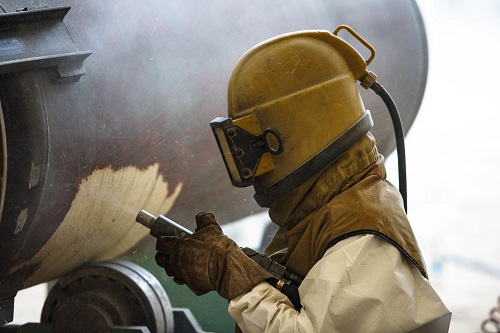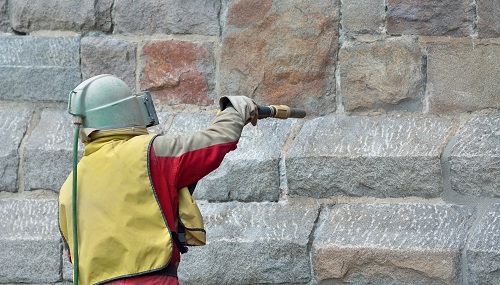The Multiple Benefits of Sandblasting
Feb 2, 2019

Sandblasting a surface to remove residue, debris, dirt, paint, or other substances is almost unbeatable in terms of its effectiveness. There simply are very few methods that do not involve using dangerous chemicals that are as dependable. If you are looking at sandblasting to clear and prepare a surface, consider these 4 reasons why you should.
Effectiveness
You can use solvents or other chemicals and the result you get will likely not be as good as if you sandblasted the surface you want to scour and clean. Any surface preparation company in New England will tell you that when it comes to effectively removing one substance or many substances from a surface, sand is so abrasive, yet gentle that you will not believe the results. Whether you are removing paint from cement or metal, oil from concrete, or residue from some other type of surface, sandblasting will give you a finish you will be pleased with, and it will help you with the other phases of whatever project you are taking on.
Surface Preparation
Sandblasting is known for its ability to scour and clean surfaces, making it ideal for abrasive blasting surface preparation, but it is less known as a preparing agent for whatever substance is going on that surface next. A sandblasted, painted surface, for instance, will have every little nook and cranny cleaned out and any residual paint residue forcibly removed or decimated, leaving a surface that is ready for the next coat.
Once exposed to advanced surface preparation via sandblasting, a surface will have very little or no contaminants to make putting on the next layer of coating more difficult. It also helps scuff up the surface, which helps with coatings and sealants adhering properly. Finally, the film that is left after sandblasting prevents rust that can build up when metal is exposed to air.

It Reveals Cracks, Dents, Etc.
Over time, every concrete floor or platform has stuff dropped on it. When that happens, dents and chips can form. Cracks can appear almost overnight from a variety of sources, including excess weight, roots underneath, frozen water, and even shifting ground. Thorough surface preparation by surface preparation specialists will reveal these blemishes and structural issues, as well as help you fix them. A huge part of competent surface preparation is to patch divots, cracks, dents, and chips to produce a clean, smooth surface.
Environmentally Friendly
Sandblasting uses components that are environmentally friendly and non-toxic. You will have to “clean” the sand after taking off toxins and pollutants, but the sand itself is all natural and is harmless to the environment once the contaminants are removed. Additionally, sandblasting is non-toxic to the employees working with the sandblasting equipment or working in the space being sandblasted. The materials used in most sandblasting environments have been tested and proven to be safe to inhale, which separates those materials from just about every other surface cleaner on the market.
Ease of Cleanup
Sandblasting cleanup is a breeze. The sand falls to the ground and you sweep it up. Even if it is filled with residue, oil, paint or other toxins, sifting the sand generally makes it as clean as when it was used. Additionally, cleanup is as simple as using a broom and dustpan or a vacuum, depending on the size of the surface being sandblasted. To clean the surface, all you need to do is run a damp rag over it and the film left over will be picked up. Compared to chemicals, which can linger on the surface and surrounding area for weeks, sand used in sandblasting is easy to cleanup, and if you are not able to do so, it is safe for the environment.
Sandblasting is one of the most effective ways of cleaning and preparing a surface imaginable. If you have a surface you need sandblasted, contact Advanced Prep Coat, Inc. today.
Advanced Prep Coat, Inc.
41C Sutton Lane
Worcester, MA 01603
63 School Street
Putnam, CT 06260
800-230-2937
- Connecticut
- Maine
- Massachusetts
- New Hampshire
- New York
- Rhode Island
- Vermont
- and the entire Northeast
